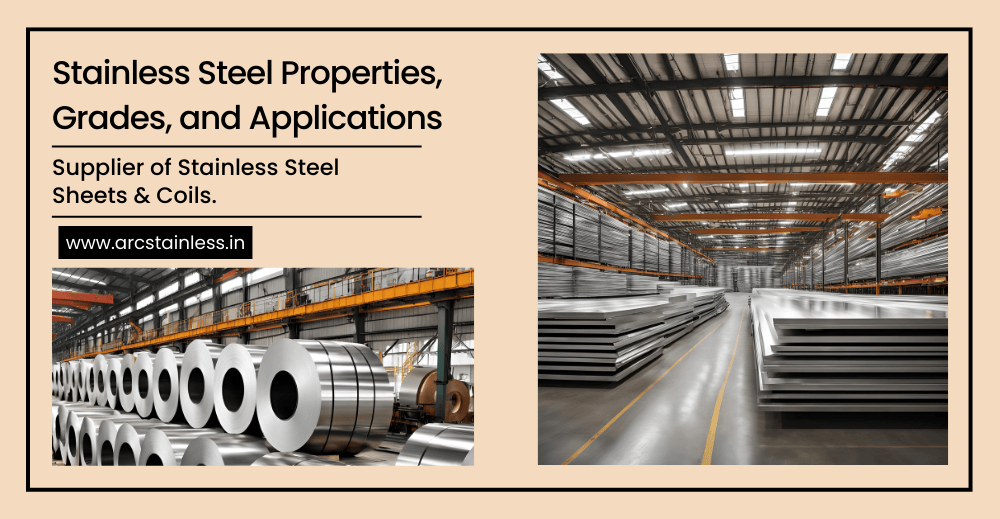
Stainless Steel Properties, Grades and Applications
Stainless Steel Properties, Grades, and Applications
Stainless steel is a remarkable alloy, celebrated for its durability, versatility, and resistance to rust and corrosion. This metal’s unique properties have made it a preferred material in countless industries, from construction and automotive to kitchenware and medical equipment. Whether you’re a designer, engineer, or simply interested in understanding stainless steel, learning about its properties, grades, and applications can provide valuable insights into its widespread use.
Properties of Stainless Steel
Stainless steel’s defining property is its resistance to corrosion, primarily due to the presence of chromium, which typically makes up at least 10.5% of its composition. Chromium interacts with oxygen to form a thin, invisible layer of oxide on the surface of the steel, creating a passive film that prevents rust. When damaged, this layer can self-heal, restoring the material’s resistance to oxidation.
Another key property of stainless steel is its strength and durability. Stainless steel maintains high strength even at extreme temperatures, making it ideal for applications where toughness and resilience are required. Additionally, stainless steel is easy to clean, which is why it is a popular choice in environments where sanitation is critical, such as hospitals and food processing facilities.
Stainless steel is also highly recyclable, with a long life cycle and minimal maintenance needs, contributing to its status as an environmentally friendly material. This characteristic is particularly important in industries seeking sustainable solutions. In fact, about 80 percent of stainless steel can be recycled, reducing its environmental impact and energy consumption in production.
Grades of Stainless Steel
The properties and applications of stainless steel vary based on its specific grade. Each grade has its unique chemical composition and physical characteristics, allowing it to suit different purposes. The most commonly used stainless steel grades can be broadly classified into four main types: Austenitic, Ferritic, Martensitic, and Duplex.
Austenitic Stainless Steel
Austenitic stainless steel is the most widely used type of stainless steel. It is known for its excellent corrosion resistance, high ductility, and non-magnetic nature. This type contains high levels of chromium and nickel, which enhance its anti-corrosion properties. Popular grades include 304 and 316, each with its unique benefits. Grade 304, often referred to as “18-8” stainless steel, contains 18 percent chromium and 8 percent nickel, making it versatile and suitable for many applications. Grade 316 has added molybdenum, which enhances its corrosion resistance, particularly against chlorides and acids, making it ideal for marine environments.
Ferritic Stainless Steel
Ferritic stainless steel contains higher levels of chromium and lower levels of carbon, making it magnetic with moderate corrosion resistance. While it lacks the robustness of austenitic stainless steel, ferritic steel has excellent resistance to stress corrosion cracking and good formability. Common grades in this category include 409 and 430. Grade 409 is commonly used in automotive exhaust systems due to its heat resistance, while grade 430 is often found in household appliances and kitchen utensils.
Martensitic Stainless Steel
Martensitic stainless steel is known for its high hardness and strength. It contains moderate amounts of chromium and is typically magnetic. This type of stainless steel is commonly used in applications that require wear resistance and sharp edges, such as knives, surgical instruments, and industrial cutting tools. The most popular grades include 410 and 420. However, martensitic stainless steel is less resistant to corrosion compared to austenitic grades, so it may require additional protective coatings for certain applications.
Duplex Stainless Steel
Duplex stainless steel combines the qualities of austenitic and ferritic stainless steel, offering both strength and corrosion resistance. With a high chromium and low nickel content, duplex steel provides excellent resistance to chloride stress corrosion and high strength compared to other types. One of the most notable duplex grades is 2205, commonly used in the oil and gas industry, chemical processing, and marine applications. This type of stainless steel is often chosen for its ability to withstand extreme environments.
Applications of Stainless Steel
Stainless steel’s properties and versatility make it suitable for a wide range of applications across numerous industries. Here’s a look at some of the common uses for each type of stainless steel.
Construction and Architecture
Stainless steel is frequently used in building and architectural projects due to its strength, durability, and aesthetic appeal. From structural components to decorative features like handrails, stainless steel enhances the structural integrity of buildings while offering a modern, sleek look. Stainless steel is also popular for roofing, wall cladding, and reinforcement bars. Grade 304 is often chosen for interior architectural elements, while grade 316 is used for exterior features that require enhanced corrosion resistance.
Automotive and Transportation
The automotive industry uses stainless steel for exhaust systems, trim, and other components that demand durability and resistance to heat and corrosion. Ferritic stainless steels, particularly grade 409, are commonly used in exhaust systems due to their heat resistance and cost-effectiveness. Martensitic grades, on the other hand, are used in components where hardness and wear resistance are required, such as shafts and fasteners.
Medical and Food Processing
Hygiene is crucial in both the medical and food processing industries, and stainless steel is highly favored in these settings because it is easy to clean, non-reactive, and resistant to corrosion. Austenitic stainless steels, like grades 304 and 316, are often used in medical devices, surgical instruments, and food processing equipment. Stainless steel maintains its strength in various temperature ranges, making it ideal for sterilization procedures and ensuring a contaminant-free environment.
Chemical and Oil Industries
In the chemical and oil industries, equipment and pipelines must withstand corrosive substances and extreme environments. Duplex stainless steel, such as grade 2205, is highly resistant to chloride stress corrosion, making it suitable for applications in offshore oil platforms and chemical processing plants. Its unique combination of strength and corrosion resistance makes it an excellent choice for these demanding industries.
Household Applications
